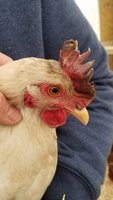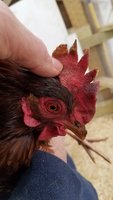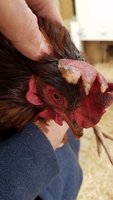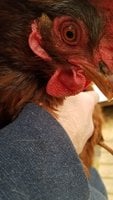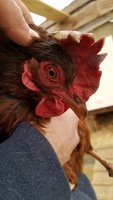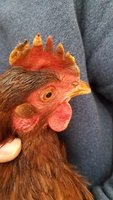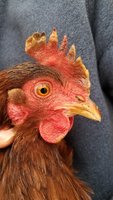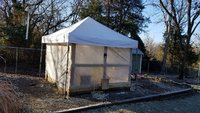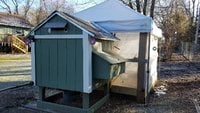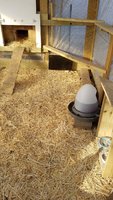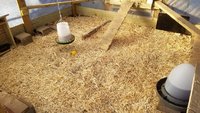I am looking for any information and assistance on frostbite. I am including several photos of what I have done in prep for winter. This is my first winter with chickens. We just finished a week long of sub-zero and single digit temps here in Kansas. I could use some advise as I had 3 of my 6 get frostbite combs and a few more get a little frostbite on their waddles. A quick history: I inherited the chickens, coop, and run from my neighbors in July when they moved. Everything I received was poorly constructed and I have made many improvements so far. The 4x4 coop at the time I got it had no ventilation, and I have added all that I safely can due to its height and roost draft. For bedding in the coop I have 4 inches of pine shavings and 2 inches of straw. I have wrapped the 9x9 run in 7 mil plastic to prevent wind from blowing through, the top is covered but open for ventilation. I have also placed 6-8 inches of straw in the entire run. I have a heated waterer that is working great, and I did install a cozy coop panel heater in the run which I only turned on during the single digit and below zero days (which may have been a waste as I never really seen them near it, but wanted a little heat available if they choose). I do allow my girls to free range daily almost but with this cold and wind I kept them contained to the run where the wind was blocked. To be honest they had no desire to leave the run with the snow and cold so keeping them in was not a problem for them. Recommended by a friend I was coating their combs and waddles every 2 days with Sierra Sage Green Goo Animal First Aid Salve as a frostbite preventative. I also cleaned all droppings from the coop and run daily. With all of these precautions I still had several get frostbite my 2 Rhode Island Reds have large combs and were greatly affected (pictures attached). If possible I would like feedback on what I did wrong if anything, and also on the severity of the frostbite as I have seen several pics where it just gets the tips and mine are much more affected. Since the onset of the frostbite I have been applying the Sierra Sage Green Goo Animal First Aid Salve daily and they do appear to be getting better looking. Thanks in advance for all of the great knowledge that is shared in this community. BYC has been a true blessing to me and my girls. If you have any questions or need any more details please let me know. It can be so frustrating when you think you are doing everything right and still have a negative outcome. Thanks
